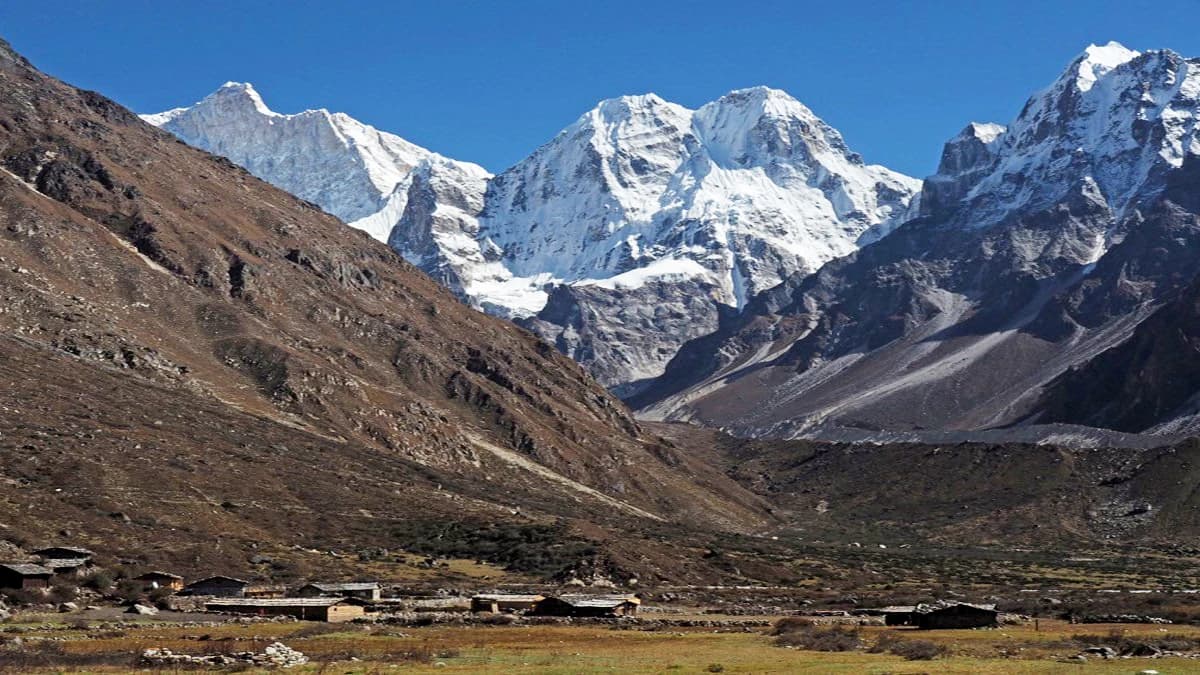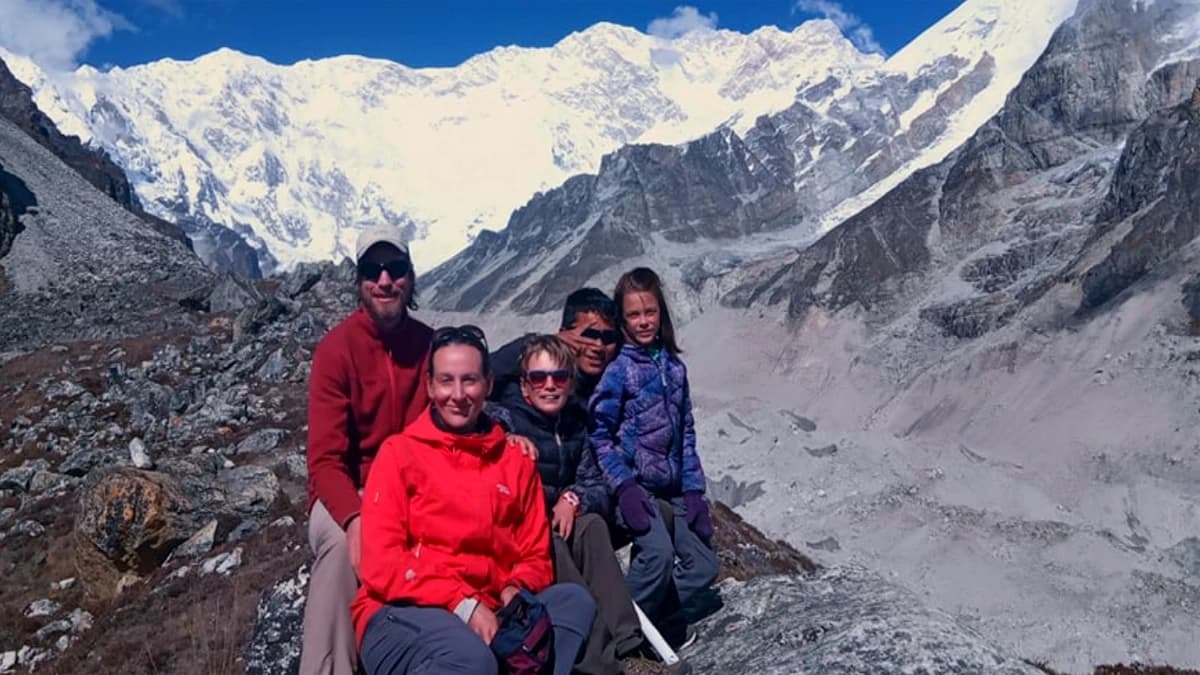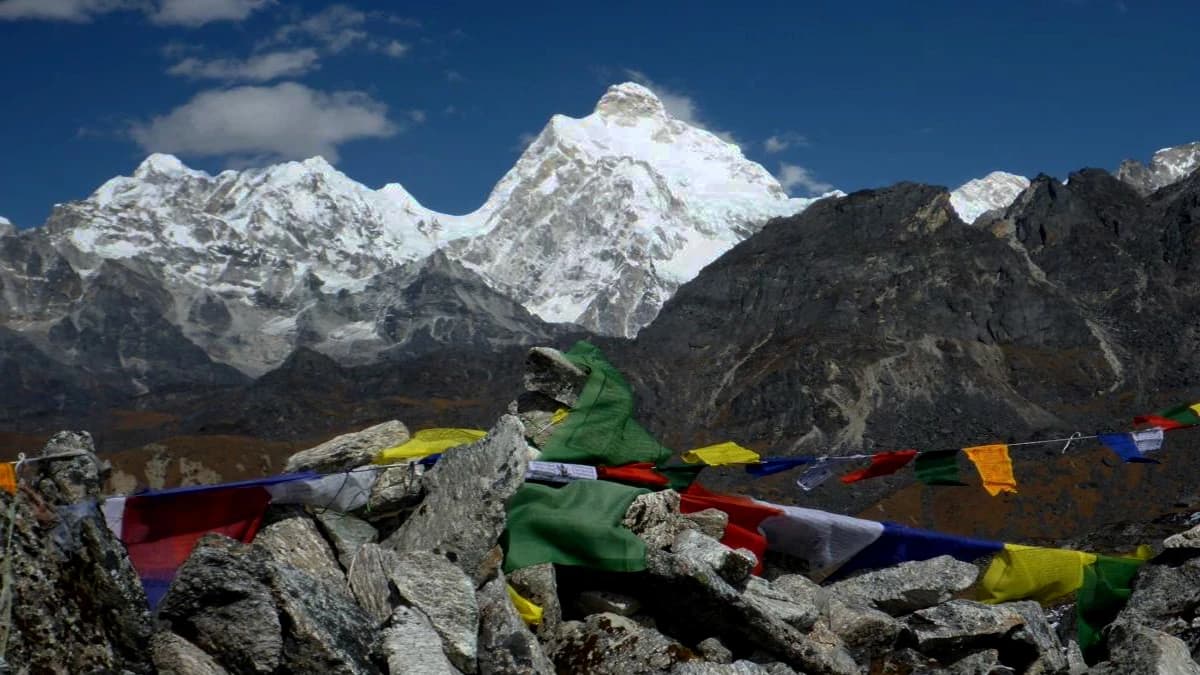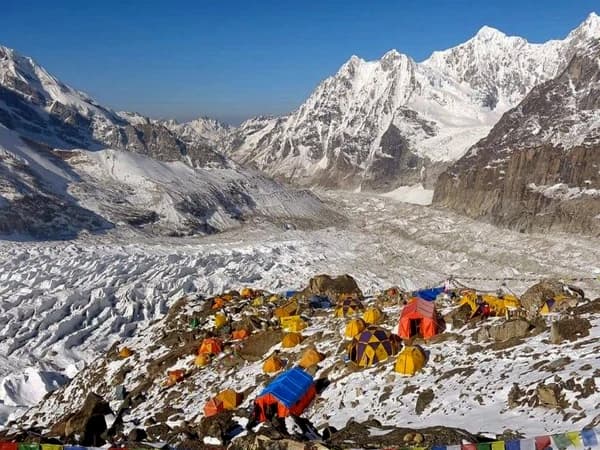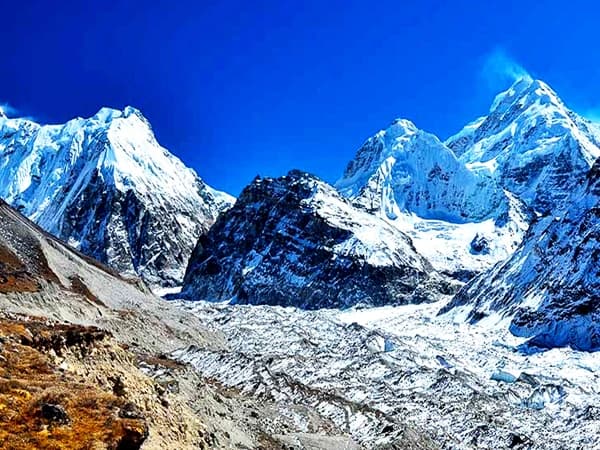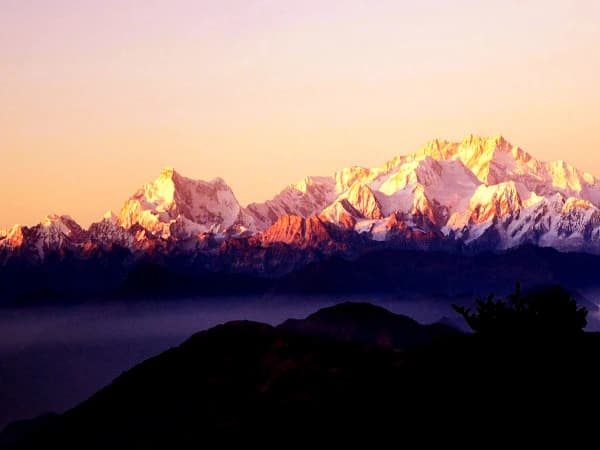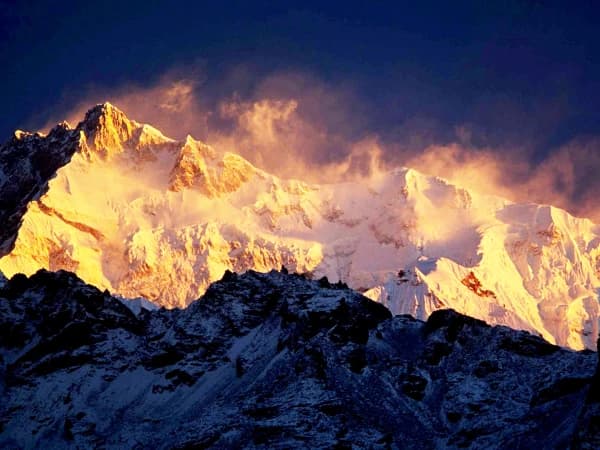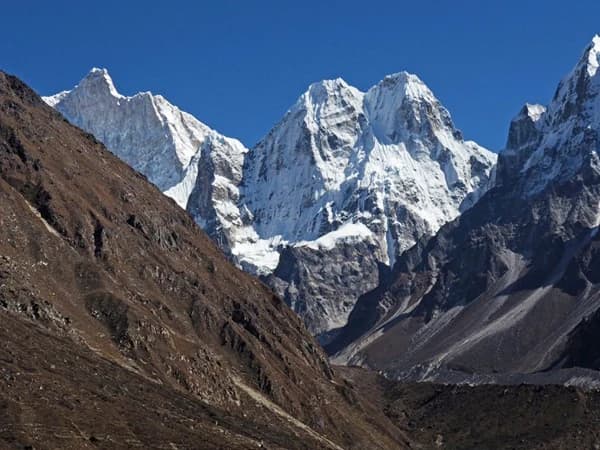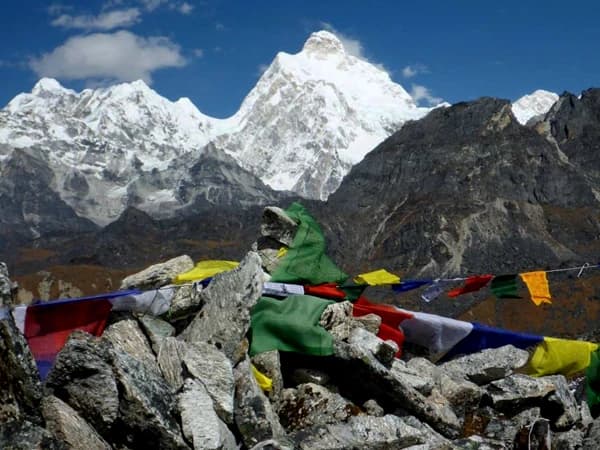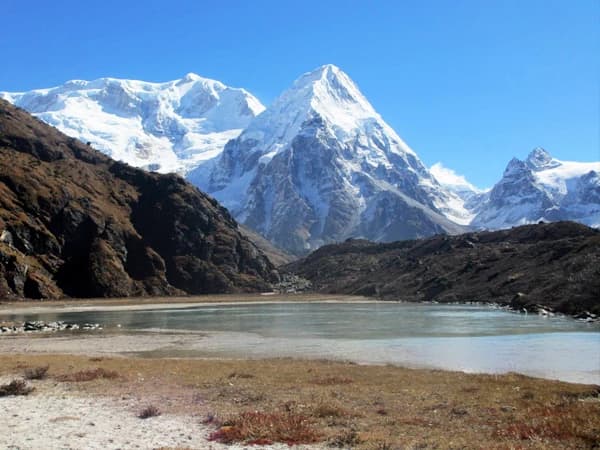Kanchenjunga Circuit Trek: An untouched region for adventure
The Kanchenjunga Circuit Trek is one of Nepal’s most untouched and pristine trekking trails, offering a rare adventure through remote Himalayan landscapes. This remarkable journey circles the world’s third-highest peak, Mt. Kanchenjunga (8,586m), taking trekkers through traditional villages, dense forests, high alpine valleys, and dramatic glaciers. The trail remains less crowded, making it ideal for those seeking authentic wilderness, rich culture, and pure natural beauty.
With Himalayan Trekking Path, trekkers enjoy a safe, well-organized, and immersive experience led by expert local guides. The circuit covers both Kanchenjunga North and South Base Camps, showcasing breathtaking views of Jannu Himal, Yalung Glacier, and Kanchenjunga Massif. The trek offers rich biodiversity, including red pandas, rhododendron forests, and unique Limbu and Rai cultures.
Perfect for adventure lovers, the Kanchenjunga Circuit Trek promises a rewarding journey into Nepal’s untouched Himalayan paradise. Book your trek with Himalayan Trekking Path Pvt. ltd for an authentic and unforgettable experience.
Kanchenjunga Trek Highlights
- Explore one of Nepal’s most untouched and remote trekking trails.
- Visit both Kanchenjunga North and South Base Camps in a single circuit.
- Experience breathtaking views of Mt. Kanchenjunga (8,586m) and Jannu Himal.
- Trek through Kanchenjunga Conservation Area, home to rare wildlife like the red panda.
- Walk across diverse landscapes, including glaciers, alpine valleys, and dense forests.
- Immerse in unique Limbu, Rai, Sherpa, and Tibetan-influenced cultures.
- Enjoy peaceful trails with very few trekkers, ideal for solitude and adventure.
- Discover beautiful villages like Ghunsa, Yamphudin, and Cheram.
- Witness vibrant rhododendron forests during spring.
- Experience authentic hospitality with support from Himalayan Trekking Path’s expert local team.
Short Kanchenjunga Trek
The 17 Days Kanchenjunga Circuit Trek is the updated Short Kanchenjunga Trek Itinerary that includes both the north and south Base Camps of Mt. Kanchenjunga (8586m), the third highest mountain in the world, following Mt. Everest and Mt. K2. The Kanchenjunga trek is a premier adventure trekking destination for those who wish to discover the unspoiled natural and cultural wealth of this stunning region. If you are in search of a brief itinerary for the Kanchenjunga circuit trek, this package is the ideal choice. The journey may be short, but the adventure is immense. This package encompasses the complete trekking experience of the journey. The trek is exceptional for those who seek solitude and wish to uncover the hidden beauty of the area.
Budget Kanchenjunga Circuit Trek
Our 17-day Kanchenjunga circuit trek itinerary and package is budget-friendly. However, if you wish to include meals, a porter, and other services, you have the freedom to add them. This Kanchenjunga Circuit trek package offers more flexibility to tailor your trip according to your preferences. The package includes all necessary formalities, transportation, a guide, and accommodation in the mountains, and flight, which are fundamental needs for the trip. If you prefer to manage your meals independently, that is possible; however, if you wish to add meals, you can contact the local adventure planner at Himalayan Trekking Path Pvt. Ltd, and we will provide you with the best deal. Additionally, if you require a porter, you can opt for porter support; we will provide you with a very helpful and friendly porter to enhance your trip's joy and comfort. Moreover, if you are looking for a comprehensive package for the Kanchenjunga Circuit trek, consider our 22-day Kanchenjunga trek package. If you are seeking a budget-friendly Kanchenjunga Base Camp trek, do not forget to take advantage of this 17-day Kanchenjunga trek package. Book your holiday with Himalayan Trekking Path Pvt. Ltd and start your holiday as you desire. We are here to fulfill your wishes.
Why the Kanchenjunga Trek?
The Kanchenjunga Trek is the perfect choice for trekkers seeking a genuine, untouched Himalayan adventure away from commercial crowds like Annapurna and Everest Treks. Nestled in Nepal’s far-eastern Himalayas, this route offers a rare blend of wild nature, breathtaking mountain scenery, and rich cultural encounters. Trekkers enjoy close-up views of Mt. Kanchenjunga (8,586m)—the world’s third-highest peak—along with mesmerizing landscapes of glaciers, deep valleys, waterfalls, and alpine forests.
The region lies within the Kanchenjunga Conservation Area, home to endangered species like the red panda and snow leopard, making the journey ideal for nature lovers. Its remote villages showcase authentic Limbu, Rai, and Sherpa cultures, allowing visitors to experience centuries-old traditions and warm hospitality.
For those seeking a challenging yet rewarding trek, the Kanchenjunga route provides unmatched solitude, adventure, and natural purity. With Himalayan Trekking Path, trekkers experience this iconic trail safely, professionally, and with true local expertise, making the Kanchenjunga Trek a lifetime achievement for every adventure seeker.
Kanchenjunga Circuit Trek Permits and Cost
The Kanchenjunga Circuit Trek requires two main permits: the Restricted Area Permit (RAP) and the Kanchenjunga Conservation Area Permit (KCAP). The Restricted Area Permit is mandatory for all trekkers and can only be issued through a registered trekking agency, with a licensed guide required. The RAP costs USD 20 per person per week, depending on the season. The Kanchenjunga Conservation Area Permit costs NPR 2,000 per person for foreigners. Solo trekking is not allowed in this restricted region. Himalayan Trekking Path Pvt. Ltd arranges all permits, ensuring hassle-free access to the untouched Kanchenjunga Himalayas.
Optimal Time for the Kanchenjunga Trek
The optimal time for the Kanchenjunga Trek is during spring (March to May) and autumn (September to November), when weather and trail conditions are most favorable. Spring offers mild temperatures, clear mornings, and vibrant rhododendron forests in full bloom, creating a colorful trekking environment. This season provides stable weather, making high-altitude sections like Sele Le Pass more accessible.
Autumn is equally ideal, known for its crisp skies, excellent mountain visibility, and comfortable daytime temperatures. After the monsoon, the air becomes clean and clear, offering stunning panoramas of Mt. Kanchenjunga (8,586m) and surrounding peaks. Trails are dry and safer, making the overall journey smoother.
Winter (December–February) brings heavy snow and extreme cold, while monsoon (June–August) causes rain, landslides, and difficult trail conditions. For the safest and most rewarding experience, trekking in spring or autumn ensures the best mountain views, comfortable weather, and optimal conditions for exploring this untouched Himalayan region.
Flora and Fauna of the Kanchenjunga Circuit Trek
The Kanchenjunga Circuit Trek passes through one of Nepal’s most diverse ecological zones, offering rich flora and fauna within the Kanchenjunga Conservation Area. The lower regions are covered with lush subtropical forests, featuring oak, pine, birch, and bamboo. As trekkers gain altitude, the trail enters enchanting rhododendron forests, which bloom in vibrant red, pink, and white during spring. Higher elevations showcase alpine meadows, juniper shrubs, and rugged Himalayan vegetation.
The region is equally remarkable for its wildlife. Rare and endangered species such as the red panda, snow leopard, and Himalayan black bear inhabit these remote forests. Trekkers may also spot blue sheep, musk deer, and langur monkeys along the trail. Kanchenjunga is home to diverse birdlife, including pheasants, Himalayan monal, eagles, and various songbirds.
This unique blend of untouched vegetation and protected wildlife makes the Kanchenjunga Circuit Trek a true paradise for nature lovers and biodiversity enthusiasts.
Local Villages and the rich Culture of the Kanchenjunga Circuit Trek
The Kanchenjunga Circuit Trek is not only a natural wonder but also a journey through remote villages where traditional Himalayan culture thrives untouched. Trekking through settlements like Taplejung, Yamphudin, Ghunsa, Cheram, and Kambachen, travelers experience the authentic lifestyle of Limbu, Rai, and Sherpa communities. These villages retain their centuries-old architecture, with stone houses, prayer flags, and mani walls blending seamlessly into the rugged landscape.
Locals practice traditional farming, livestock rearing, and craft-making, giving trekkers a glimpse into sustainable mountain living. Festivals, local dances, and rituals offer cultural immersion, while the warm hospitality of the villagers makes every stop memorable. Limited modernization and restricted tourist access preserve the authenticity of daily life.
The Kanchenjunga trek thus offers a rare opportunity to witness Nepal’s untouched Himalayan culture, combining breathtaking landscapes with cultural richness, making it an ideal choice for trekkers seeking both adventure and meaningful cultural experiences.
Kanchenjunga Circuit Trek with Local Guide
For an authentic and safe Kanchenjunga Circuit Trek, choosing the right local guide is essential. Himalayan Trekking Path Pvt. Ltd is the best local company in Nepal, offering professional, government-licensed guides with extensive experience in the Kanchenjunga region. Their guides are knowledgeable about the remote trails, high passes, and local culture, ensuring trekkers navigate safely while enjoying a rich Himalayan experience.
The company provides reasonable costs without compromising on quality, offering top-notch services including well-planned itineraries, accommodation arrangements, permit processing, and emergency support. Trekkers benefit from authentic cultural interactions, learning about Limbu, Rai, and Sherpa traditions while exploring untouched villages along the circuit. Safety is a top priority, with proper acclimatization schedules, route guidance, and backup plans in place.
With Himalayan Trekking Path, trekkers experience flexibility, comfort, and professionalism, making the Kanchenjunga Circuit Trek not only an adventure but also a memorable, authentic Himalayan journey guided by trusted local experts.
Important Notices for the Kanchenjunga Circuit Trek
- A government-licensed local guide is mandatory for trekking in the Kanchenjunga Restricted Area.
- Necessary permits—the Restricted Area Permit (RAP) and Kanchenjunga Conservation Area Permit (KCAP)—are required and arranged by Himalayan Trekking Path Pvt. Ltd.
- Trekkers must be physically fit and prepared for high-altitude trekking, with basic lodge facilities available along the route.
- Flights between Kathmandu and Bhadrapur are included in the package; schedules may change due to weather conditions.
- Solo travelers are not allowed to trek in the restricted area. Permits must be shared with other trekkers, or small groups should prepare for higher costs or private arrangements.
- Early booking is recommended to secure permits, flights, and accommodations for a safe and well-organized trekking experience.
Kanchenjunga Circuit trek Cost for 2026-2027
The cost of the Kanchenjunga Circuit Trek varies depending on the trekking duration, season, group size, services selected, and travel style. With Himalayan Trekking Path Pvt. Ltd, trekkers receive the best value and special seasonal offers for this untouched and remote Himalayan adventure. The basic cost starts from USD 600 to USD 1000 per person, which includes a professional government-licensed guide, mountain accommodation, shared transportation, and round-trip flights between Kathmandu and Bhadrapur.
For trekkers who prefer additional comfort, you can upgrade to the Comprehensive Kanchenjunga Circuit Trek Package, which covers all meals, porters, permits, and full support throughout the journey. Solo travelers should expect a higher cost due to private arrangements, while groups receive attractive discounts, making it more budget-friendly.
This flexible pricing ensures every traveler, from budget adventurers to comfort seekers, can explore the pristine beauty of the Kanchenjunga Circuit, one of Nepal’s most untouched and rewarding trekking trails. The Breakdown Cost of the Kanchenjunga Circuit Trek
- Solo Trekkers can enjoy the Kanchenjunga Circuit trek at USD1000
- Small group (2-6 pax) cost for the Kanchenjunga Circuit trek is USD800 per person
- The group of 7-10 pax cost of the Kanchenjunga Circuit Trek is USD700 per person
- The Large group (11 -20 Pax), the cost of the Kanchenjunga Circuit Trek is USD 600 per person

